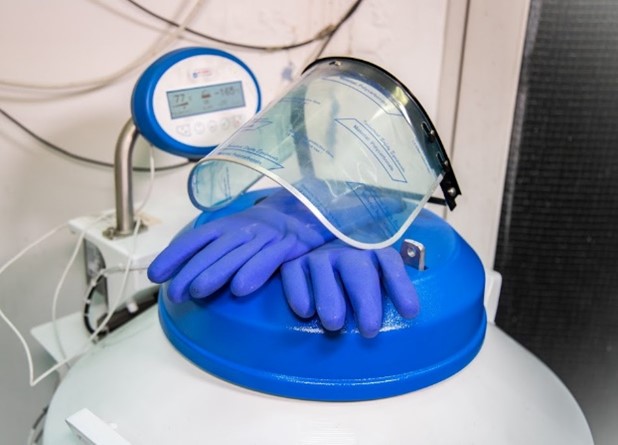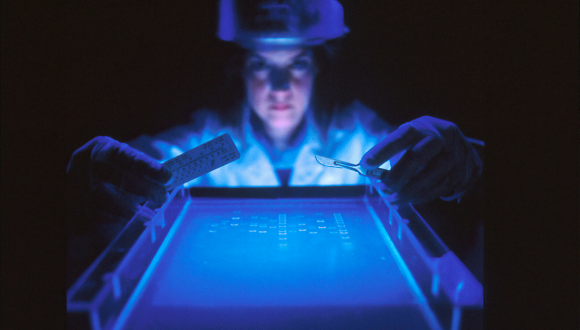Personal Protective Equipment (PPE)
Personal Protective Equipment (PPE) is a primary containment refers to clothing and equipment to protect the user from specific hazardous. PPE is a primary containment includes lab coats, gloves and safety glasses
PPE for autoclave
The hazards associated with autoclave use include heat, steam, and pressure. Familiarize yourself with the hazards and know how to protect yourself before operating an autoclave. Do not operate an autoclave until you have been trained how to do so safely.
- Always use personal protective equipment (PPE) when using an autoclave
- Wear a lab coat, heat-resistant gloves, and face shield. The hazardous can occur when opening the autoclave after loading. Wear a nitrile apron on the lab coat
- Be sure arms are covered by a lab coat and longer heat-resistant gloves to prevent burns from heat and steam
 |
||
|
Apron |
Nitrile gloves
|
Face shield |
PPE for liquid nitrogen
The extremely low temperature of the liquid can cause severe frostbite or eye damage upon contact. Items in contact with liquid nitrogen become extremely cold. Touching these items may result in torn flesh. Many substances become brittle upon contact with liquid nitrogen and may shatter when cold (such as common glass and large solid plastics), sending pieces of the material flying.
On vaporization it expands by a factor of 700; one liter of liquid nitrogen becomes 24.6 cubic feet of nitrogen gas. This can cause explosion of a sealed container. This release of nitrogen can also displace oxygen in the room and cause asphyxiation without warning.

Liquid nitrogen locator: PPE gloves, face shield, lab coat
Use liquid nitrogen only in well ventilated places. Never dispose of liquid nitrogen by pouring it on the floor. It could displace enough oxygen to cause suffocation. Nitrogen is colorless and odorless – the cloud that forms when you pour liquid nitrogen is condensed water vapor from the air, not nitrogen gas.
Do not allow any liquid nitrogen to touch any part of your body or become trapped in clothing near the skin.
- Face shield – Required when pouring or filling
- Insulating gloves
- A lab coat with long sleeves, trousers, closed shoes is required to minimize skin contact
- Safety goggles
| |
||
|
Goggles |
Nitrile gloves
|
Face shield |
PPE for ultra violet (UV) transilluminator table
UV radiation used in transilluminators (for visualization of nucleic acids, DNA, RNA) is harmful to both skin and eyes. Standard wavelength bands are 254, 312, and 365 nanometers (nm).

UV radiation cannot be seen and is not felt immediately; the user may not realize the danger until after the exposure has caused damage. Symptoms typically occur 4 to 24 hours after exposure. An acute effect of UV radiation is redness of the skin called erythema (similar to sunburn). UV radiation is absorbed in the outer layers of the eye – the cornea and conjunctiva. Acute overexposure leads to a painful temporary inflammation, mainly of the cornea, known as photokeratitis.
Protect your eyes and skin.
- Face shield – Required always, in addition to the plexiglass of the UV table
- A lab coat with long sleeves. Protect your wrist with extra over sleeves when cutting a band from the gel
- Keep exposure time to a minimum


